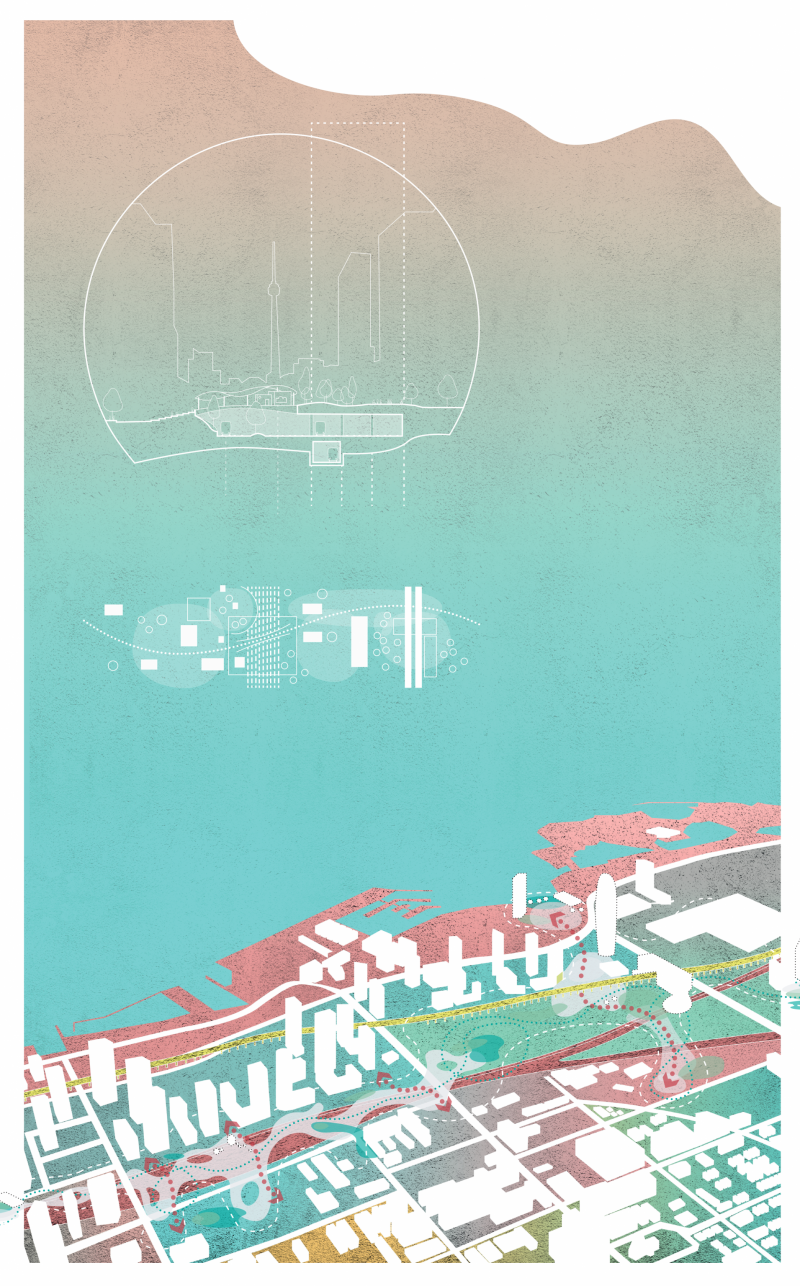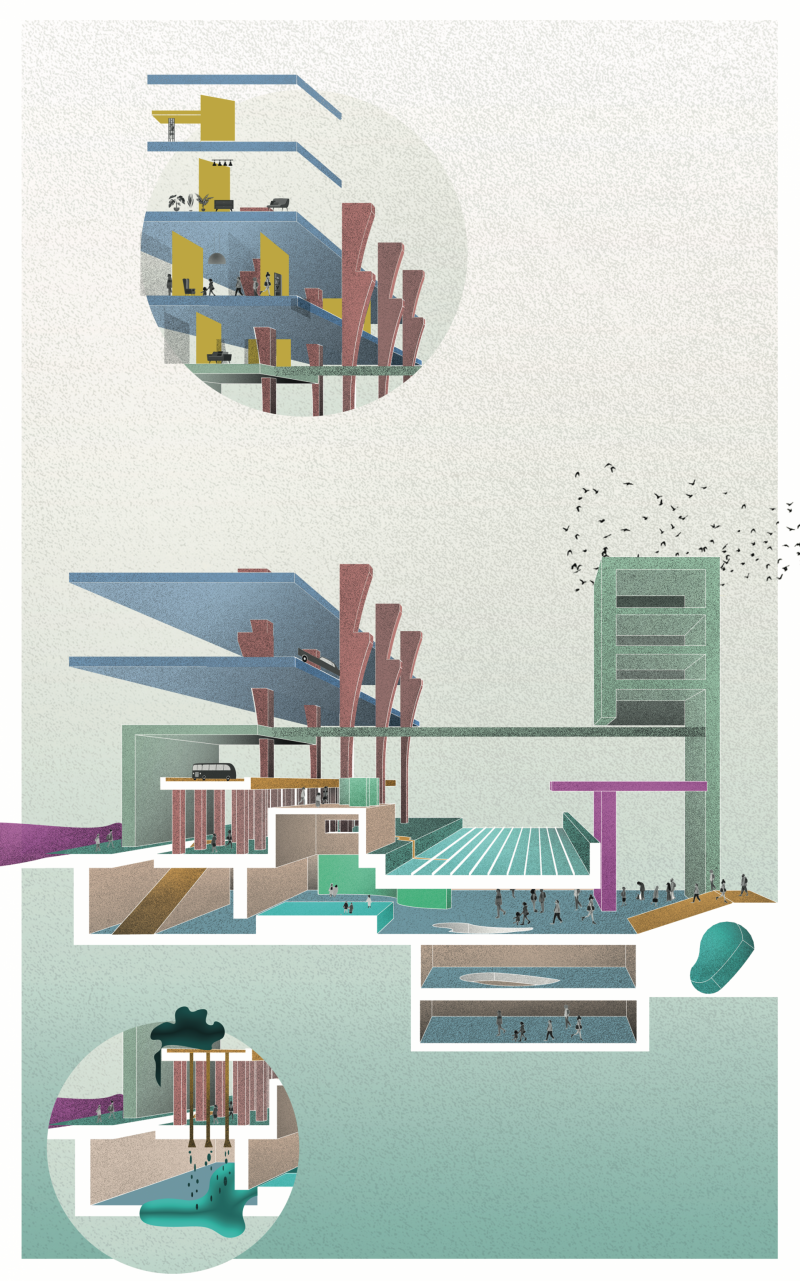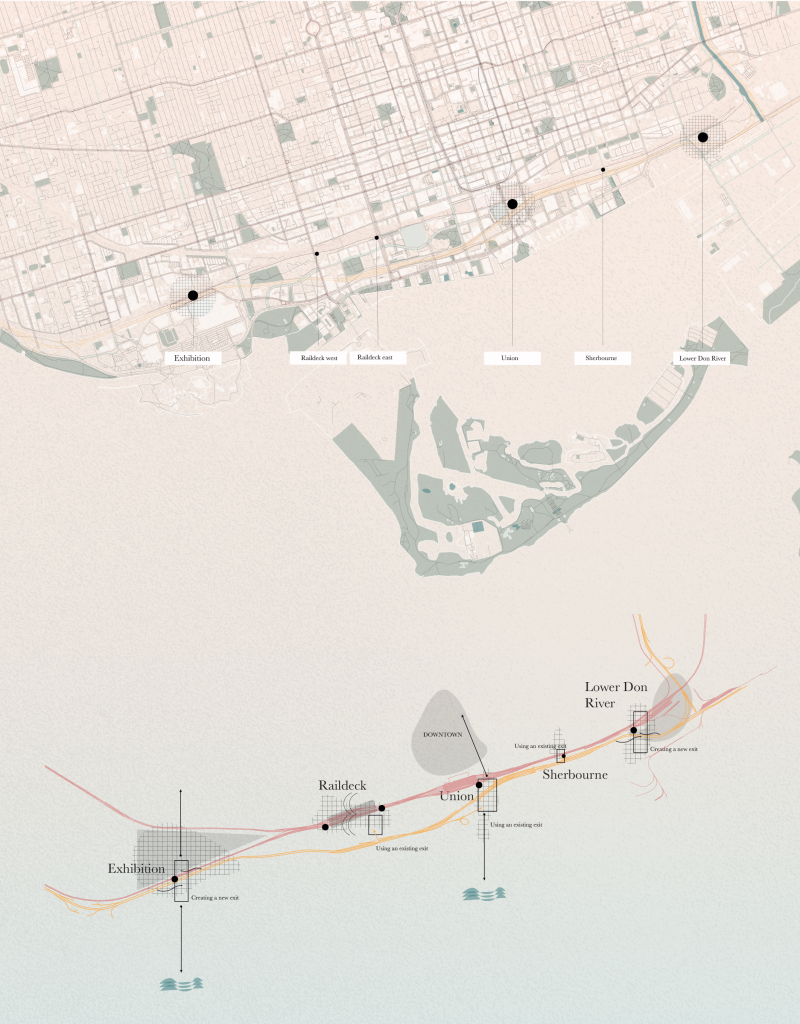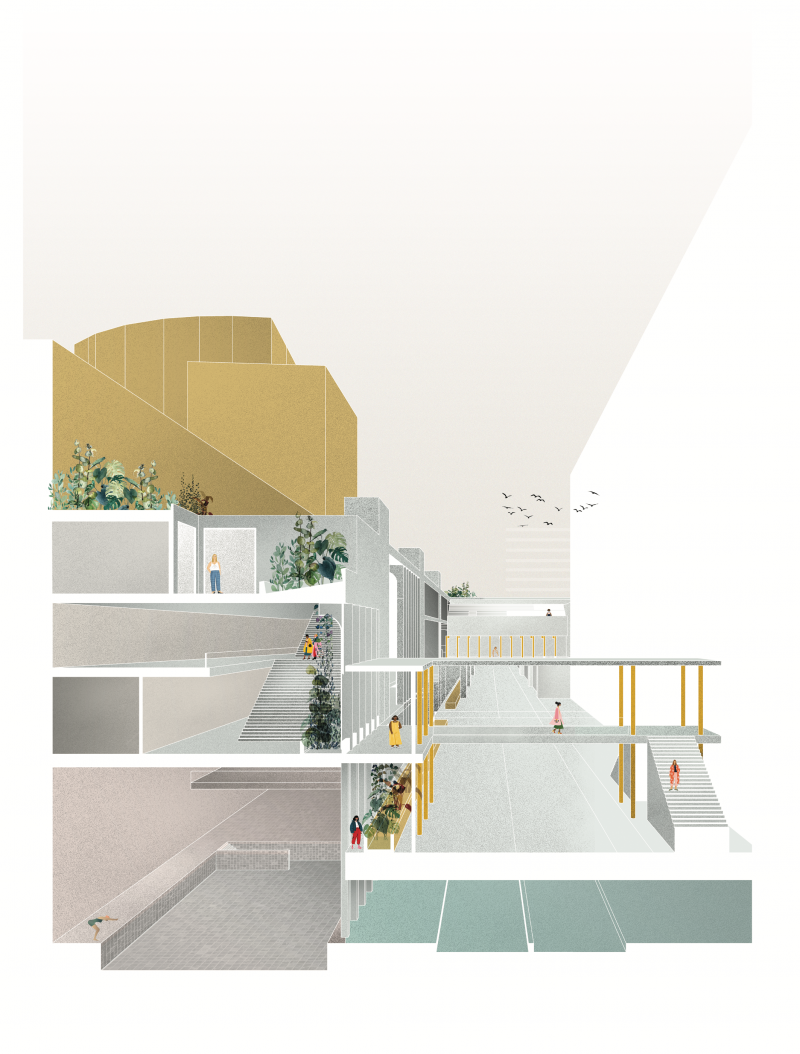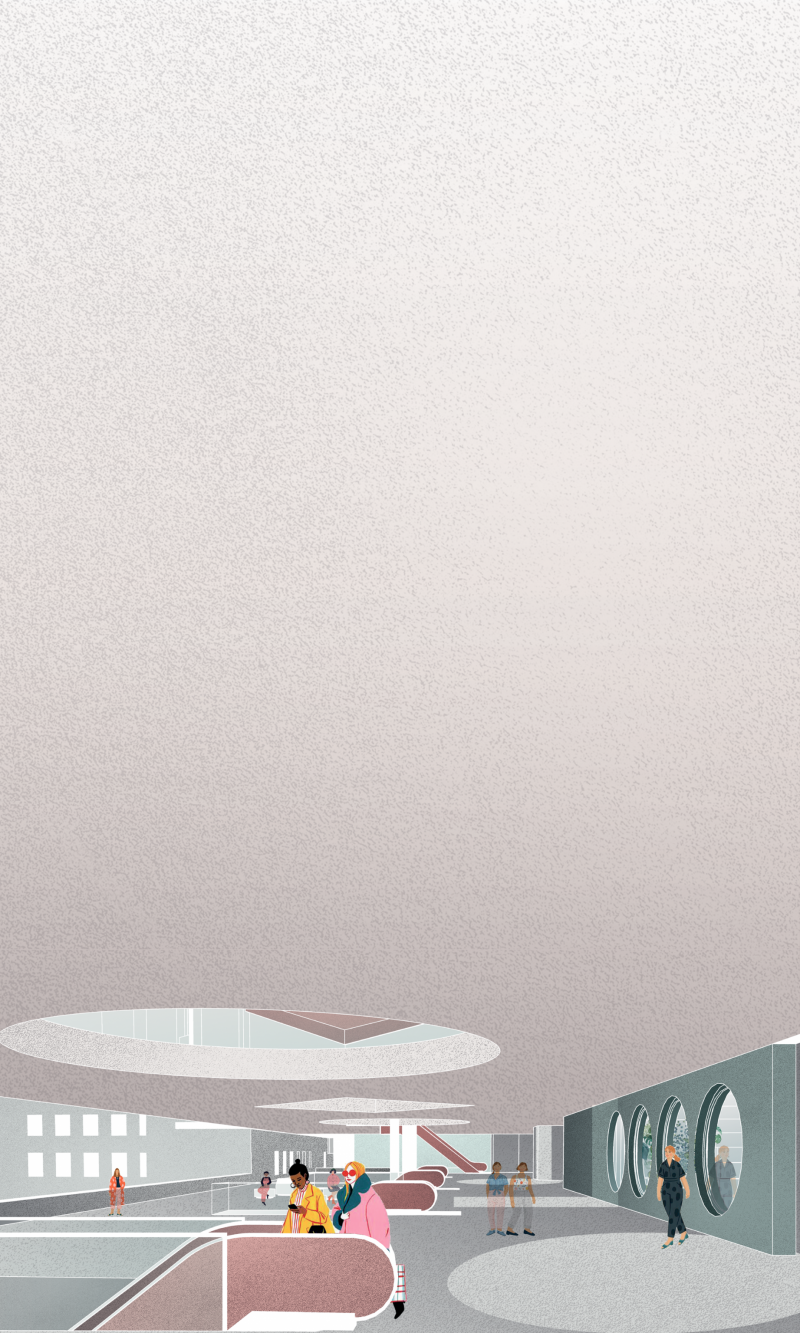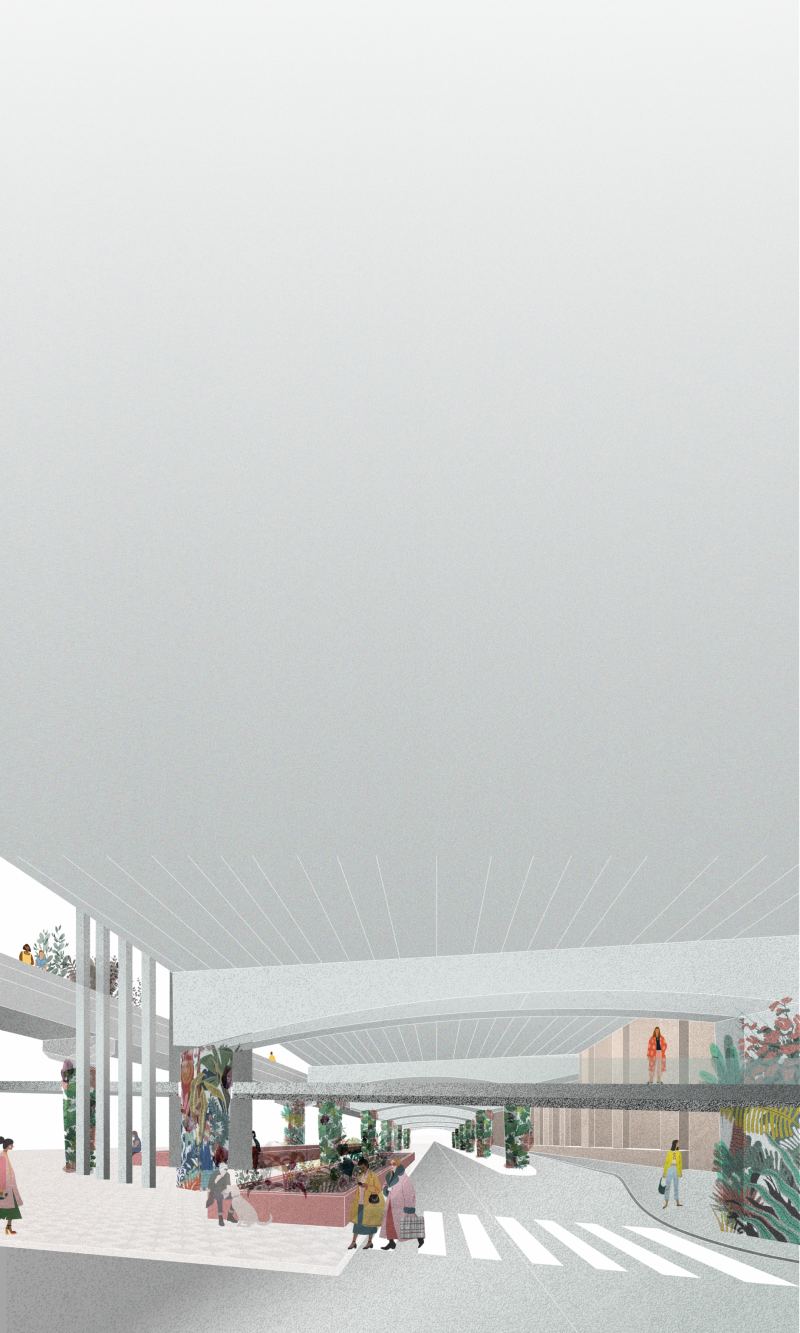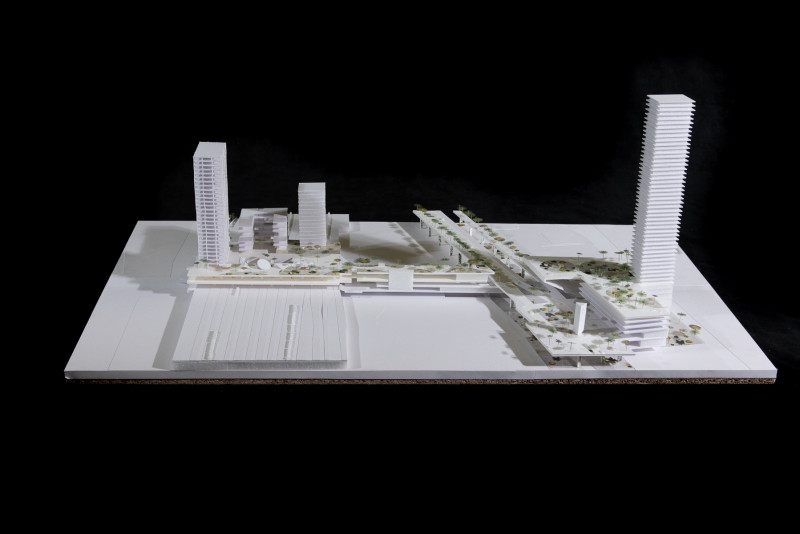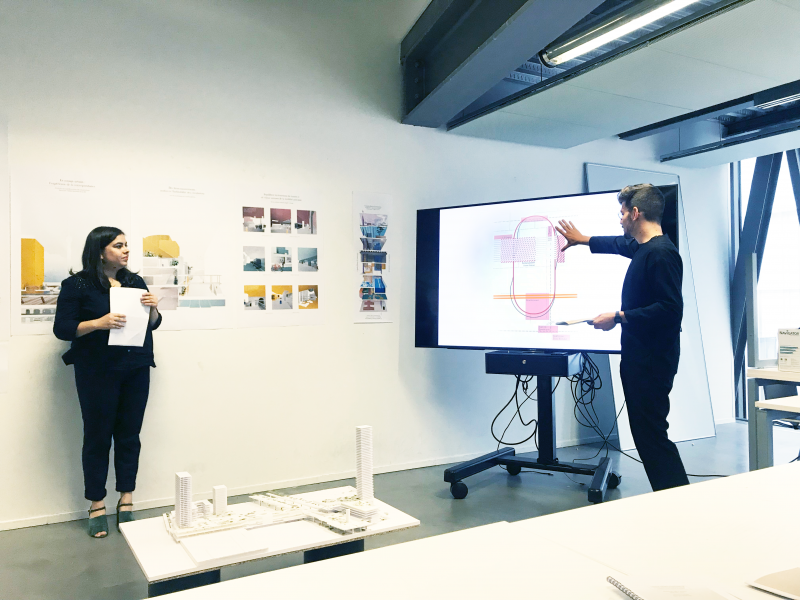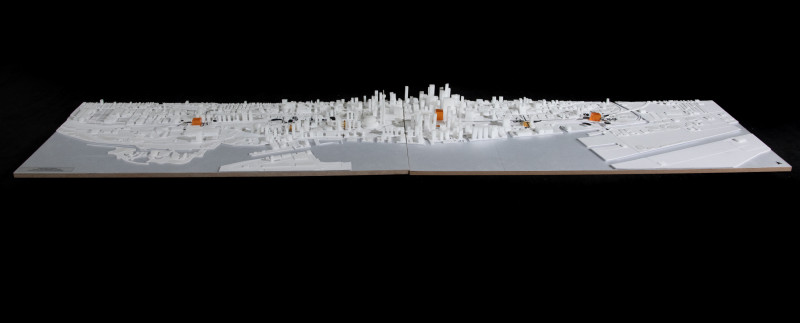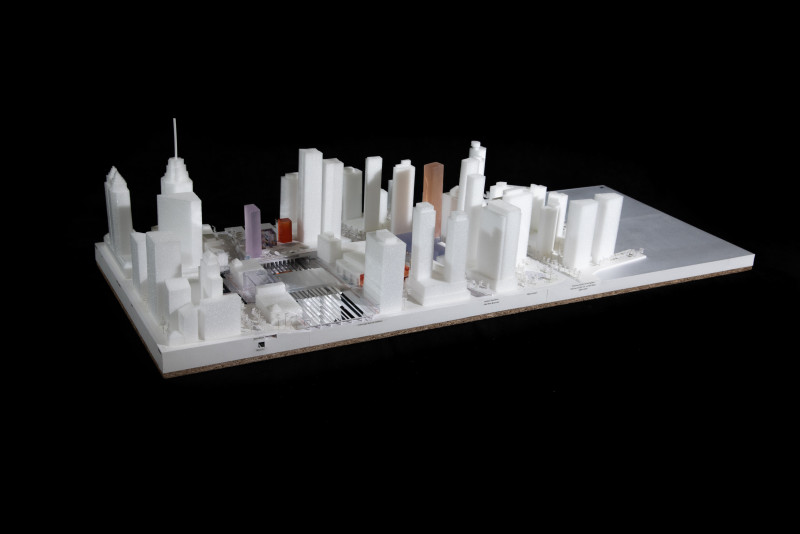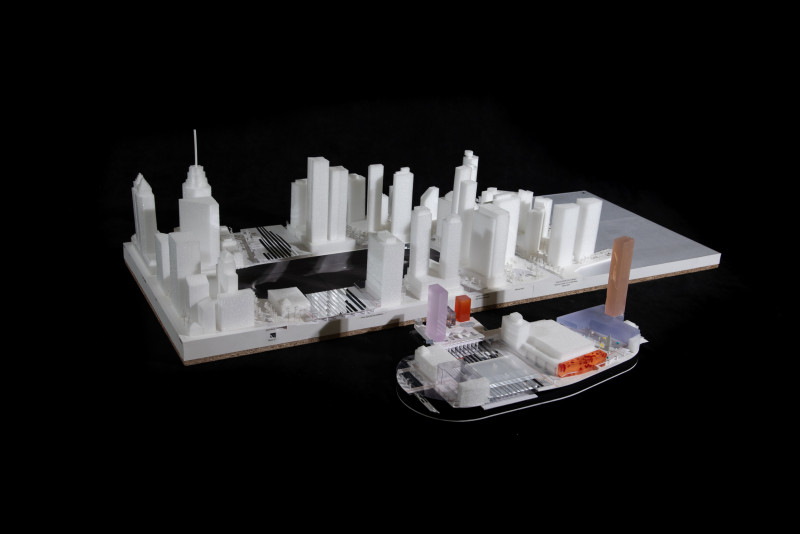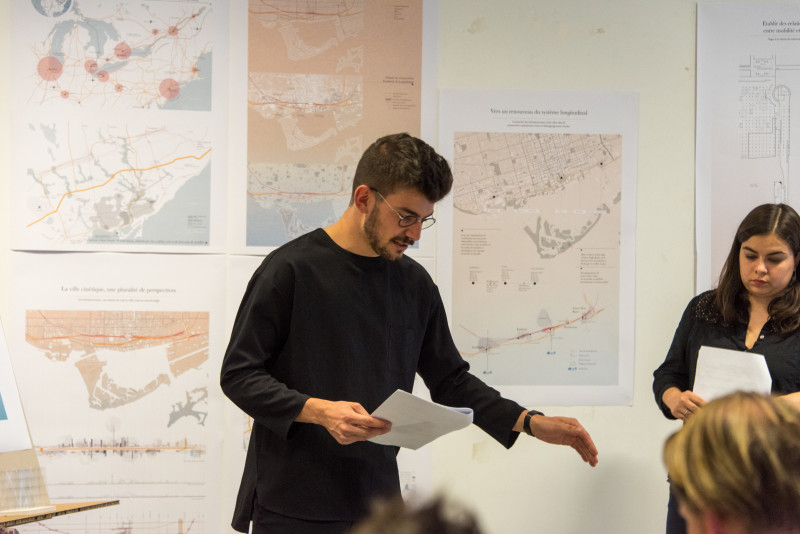Toronto, Requalification of Mono-Functional Mobility Infrastructures in support of Urbanity
This project aims to redevelop the existing road and rail infrastructure in the heart of the city of Toronto. Today, this project is a source of various nuisances and offers the possibility of opening up a new direction for the city. The urban renewal design is intended to prepare the city for the doubling of its population by 2040, thereby encouraging the use of soft modes of transportation for future residents and gently putting an end to the North American car culture. This project also aims to improve the inclusion of mobility infrastructure and to eliminate the city/lake fracture. Finally, it seeks to use the green grid to alleviate the problems of heat islands generated by heavy infrastructures. This approach aims to integrate these infrastructures into an ecological approach.
How, through the transformation of these infrastructures, can we move from mono-functional elements that are a source of heat islands, to an element that serves to reconnect downtown Toronto to Lake Ontario while preparing the city for the next time its population doubles?
This tri-scalar project is oriented around several strong spatial interventions : in a first step, a longitudinal reconfiguration of the highway is an opportunity for better integrating multiple urban systems (mobility and nature-based), in a second step more detailed urban design studies show spatial possibilities for several North-South connexions between the downtown area and the lake, and finally the design looks into urban architecture's verticality and considers the connection of the different grounds (layers) of the city generated by the infrastructures.
On the architectural scale, this project is focused on the reconfiguration of the Union Station district, and the implementation of a new multi-modal hub. This hub prototype allows to find a balance between transit spaces and habitable places by welcoming the living. The infrastructures become inhabited spaces, which are no longer only a source of nuisance, but which contribute to the discovery of the city.





